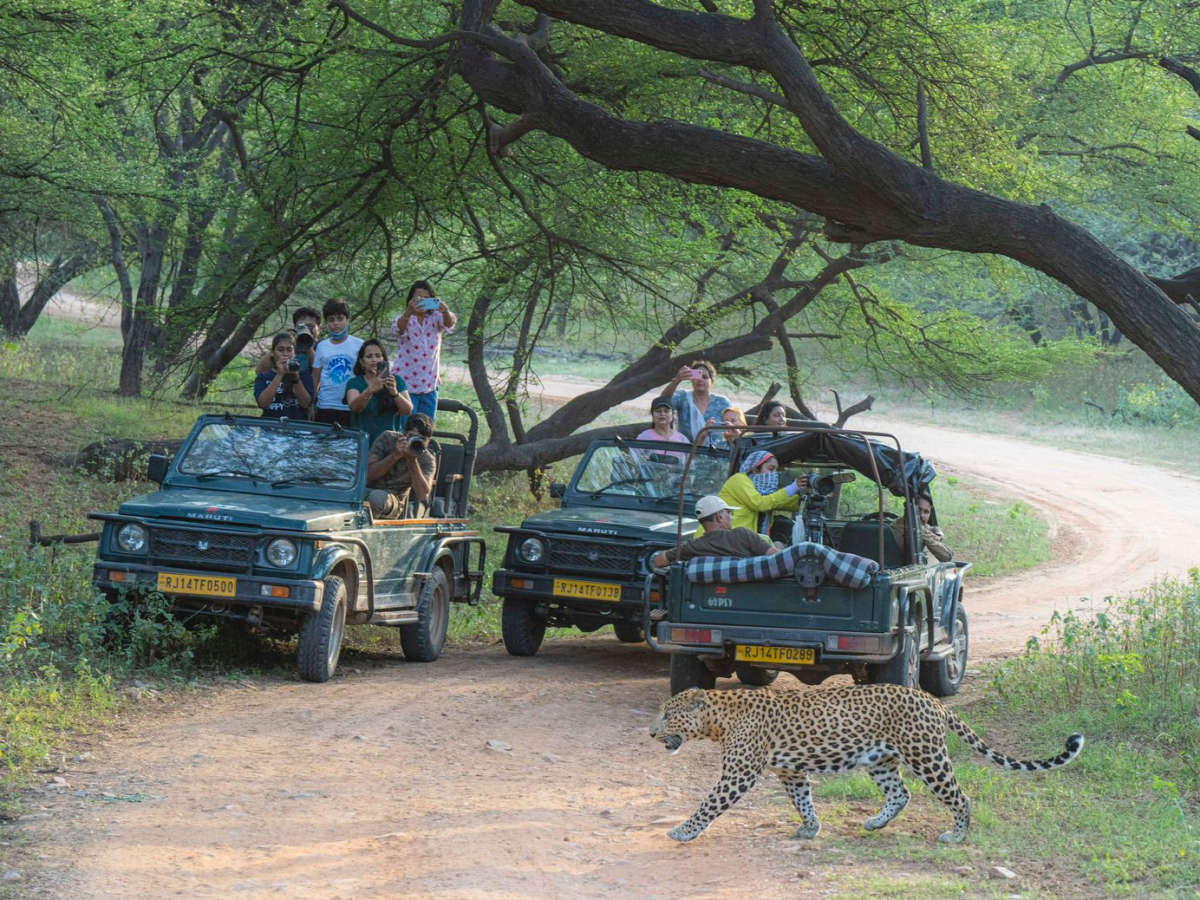Where Leopards Rule: A Thrilling Safari Adventure in Jhalana


Nestled in the heart of Jaipur, Rajasthan, the Jhalana Leopard Safari is an offbeat wilderness escape where the elusive leopard reigns supreme. Unlike the larger and more commercialized national parks in India, Jhalana offers a rare and intimate glimpse into the life of one of nature’s most graceful predators, just a short drive from an urban setting. For wildlife enthusiasts, photographers, and nature lovers, this unique park provides an unforgettable safari experience that combines accessibility with raw, untamed beauty.
The Allure of Jhalana: Rajasthan’s Urban Wildlife Haven
Jhalana Leopard Safari Park spans approximately 23 square kilometers and is India’s first dedicated leopard reserve. What makes this destination particularly special is its location, right within the city limits of Jaipur. Despite its relatively compact size, the park boasts a healthy population of leopards, estimated to be over 30 individuals, making leopard sightings surprisingly frequent.
The terrain of Jhalana comprises dry deciduous forests, scattered hillocks, and open grasslands. The forest’s natural structure — featuring rocky outcrops and scrub vegetation — provides an ideal habitat for leopards and other wildlife. This proximity of predator and prey within a limited space significantly increases the chances of sightings, often within the first hour of the safari.
Safari Experience: What to Expect
A typical Jhalana safari lasts about 2.5 to 3 hours, conducted in open gypsy vehicles with trained naturalists. Safaris are offered in two slots — morning (around sunrise) and afternoon (before sunset) — the best times to witness animal activity due to cooler temperatures.
Unlike some larger tiger reserves where sighting apex predators can take days, Jhalana offers a more consistent encounter with leopards. Visitors have reported seeing leopards walking along trails, perched on rocky ledges, or even descending trees in classic feline elegance. These cats, although shy by nature, seem more tolerant of human presence here — a fascinating adaptation to their urban-edge lifestyle.
Apart from leopards, Jhalana is also home to a variety of wildlife, including:
Striped hyenas
Indian civets
Desert foxes
Monitor lizards
Sambar and spotted deer
Over 150 species of birds, including peacocks, Indian pittas, and crested serpent eagles
This diversity makes Jhalana a paradise for bird watchers and wildlife photographers alike.
Conservation and Coexistence
Jhalana is more than just a safari destination — it's a case study in conservation within an urban ecosystem. Decades ago, this area was a reserved forest used for royal hunting. In recent years, however, the Rajasthan Forest Department, in collaboration with wildlife conservationists, has transformed Jhalana into a protected habitat with a strong conservation focus.
One of the most intriguing aspects of Jhalana is the leopards’ ability to coexist with a bustling city surrounding their territory. Leopards here have learned to navigate the narrow corridors between the forest and the city without significant conflict. This fragile harmony underscores the importance of habitat preservation and informed urban planning.
The safari also indirectly supports local communities by generating employment and encouraging eco-tourism. Local guides and drivers often share stories of individual leopards — their territories, personalities, and even family trees — adding a personal, human dimension to the wildlife experience.
Planning Your Visit: Key Information
Location: Jhalana Reserve Forest, Jaipur, Rajasthan
Best Time to Visit: October to March offers the most pleasant weather, though leopard sightings are consistent year-round.
Safari Timings: Morning (6:30 AM to 9:30 AM), Evening (3:00 PM to 6:00 PM) — subject to seasonal changes
Booking: Safaris must be booked in advance via the Rajasthan Forest Department portal or through authorized travel agents
Entry Gates: Jhalana has two main entry gates — Forest Gate and OTS Gate
What to Carry: Binoculars, camera, sunscreen, hat, water bottle, and neutral-colored clothing for better blending in
Tips for a Responsible Safari
Stay silent and still during leopard sightings to avoid disturbing the animal’s behavior.
Avoid littering; even biodegradable waste can disrupt the ecosystem.
Do not play music or loud sounds inside safari vehicles. Wildlife needs peace.
Respect the guide’s instructions at all times — their experience ensures both safety and optimal sightings.
Support ethical tourism by choosing operators who follow wildlife regulations and promote conservation awareness.
A Journey Beyond the Ordinary
What sets Jhalana apart is not only its high frequency of leopard sightings but also the deeply personal experience it offers. Here, you are not just a tourist ticking boxes but a witness to a delicate dance between predator and prey, between city and forest, between man and nature. The thrill of spotting a leopard's rosette-marked silhouette in the dappled light of dawn lingers long after the safari ends.
Unlike heavily marketed reserves, Jhalana feels intimate, almost like a secret shared with a lucky few. It's a reminder that wilderness can exist right next to us — thriving, adapting, and surviving — if only we allow it the space.
Final Thoughts
Jhalana Leopard Safari is a testament to the potential of sustainable, urban-edge wildlife conservation. Whether you're a seasoned traveler or a first-time wildlife explorer, this pocket of wilderness within Jaipur offers an authentic and awe-inspiring adventure. Here, leopards truly rule — not in dominance, but in graceful coexistence with the world around them.
By choosing to explore Jhalana, you're not just enjoying a safari; you're becoming part of a story — one that advocates for balance, reverence, and preservation.
Leave a comment